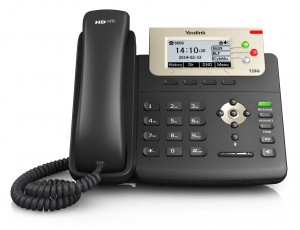Prove that it’s necessary, and that there’s a clear benefit for joining and participating
You probably know only two things about people you invite to your meetings: Yes, they’re attending; or no, they’re not. They might follow up with an email or phone call explaining why—but for the most part, it’s a binary thing.
Do you wonder why some people get just about every person they invite to attend their meetings, but you usually strike out. It could be that you need to run a meeting that they really want to attend. Even worse, they may not even contribute when they do attend. CBS MoneyWatch cites a study which revealed that 73% of professionals admit to doing unrelated work in meetings, while 39% admitted they have dozed off in meetings. Here are 6 tips to transform meetings into group productivity tools.
1. Determine the value
Meetings are not free. In fact, they can be quite expensive if you consider the value of the attendees’ time. Let’s say that you’re an upper-level manager, and you want to have an hour-long meeting with nine of your colleagues. Break down your respective salaries and turn them into an average hourly figure. You’re asking for about $750 in resources. Will the objective of your meeting justify that expense?
2. Be prepared
People may avoid your meetings because of a lack of preparation. It goes both ways. Either you’re not ready, or the people you’ve asked to attend aren’t prepared. Delay the meeting if you’re not prepared. Do the same thing if you discover that key contributors are not ready.
3. Define your objectives
Make it a personal exercise, or choose to share it with your attendees. Either way, a clearly-defined need for the meeting—its “why”—helps everyone know what to expect. It also will help them decide what to prepare for and contribute. Don’t’ make the assumption that your meeting subject is self-explanatory. Telling attendees that you want to meet on Friday at 10:30 a.m. to discuss 4th quarter sales goals gives little assistance to anyone in understanding what it is about the 4th quarter goals you want to talk about.
4. Just the facts, please
The clock is ticking. Attendees have things to do and places to go. Keep your meeting based on the distribution of facts and usable information. Avoid using the time for brainstorming, unless you’ve actually created the meeting for that purpose. Use the time to share and discuss information that can be taken away for people to think about on their own time.
5. If you call a meeting, be its leader
Facilitate the process. Start the meeting—on time, of course—and set its course. Then, be diligent about keeping it on track. This approach shows attendees that you’re both respectful of their contributions and their time. It’s difficult and takes practice, but you’ll find that your meetings will become more efficient and well-attended when you narrow their scope in discussion points, yet still allow enough time for questions and clarifications.
6. If you’re an attendee, be a contributor
The world will not end if you decline a meeting request—especially if you determine that you have nothing to contribute to its outcome. If you elect to attend, show respect for your fellow attendees by sticking to the agenda. Hijacking airlines is a serious offense. Hijacking a meeting to push your own agenda won’t land you in jail, but it may change your career’s cruising altitude if you’re a frequent offender. Aim for clarity and brevity.
CallSprout can also help with crystal-clear phone and video meetings. If you’d like to learn about the benefits of VoIP, call us at 844.889.8647 or fill out our convenient online form.






